Last Updated on June 3, 2023 by Ellen
Mazatlan, Mexico, is a beautiful city on the Pacific Ocean that draws more tourists and retirees each year. And then there’s the side of Mazatlan that most tourists never see. We had the chance to briefly experience these parts because we took the time to look.
The part of Mazatlan tourists never see
We had the chance to see this side of the city hidden to most gringos, thanks to the fantastic efforts by Vineyard Ministries, part of Vineyard Church, or as it’s known here, La Vina. This is one time when I can say ‘organized religion’ does a fantastic job for people in need.
Vineyard Church program
We took food and water to children living in poverty in neighborhoods on the other side of town, near the city dump. We also brought food and water to men and women who scavenge the dump for possible items they can fix and sell, or to collect recyclables in bulk to sell. Every peso counts in these parts of Mazatlan.
Volunteers arrive at La Vina at 9:00 a.m. Thursdays to help make sandwiches and ready bottle water to hand out to people who really need a break. It just so happens the Thursday we went to volunteer was Thanksgiving. (There may be additional days for the this trip in the high season. More info on that is near the end of this post.)
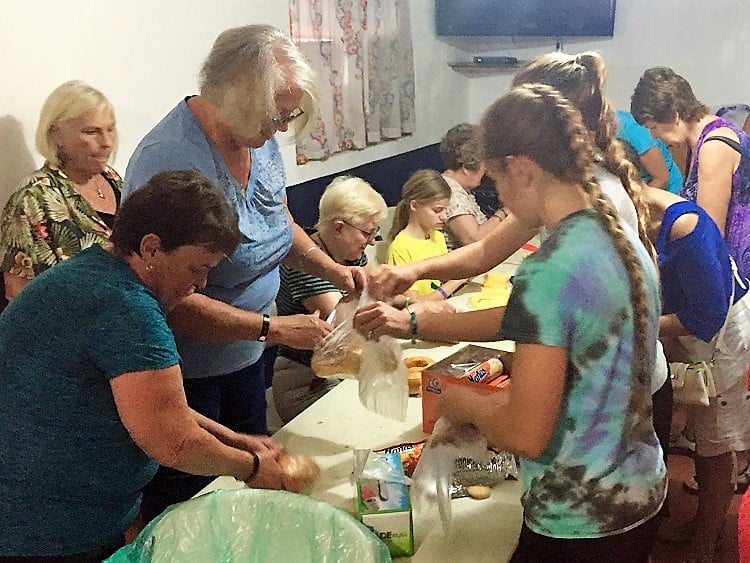
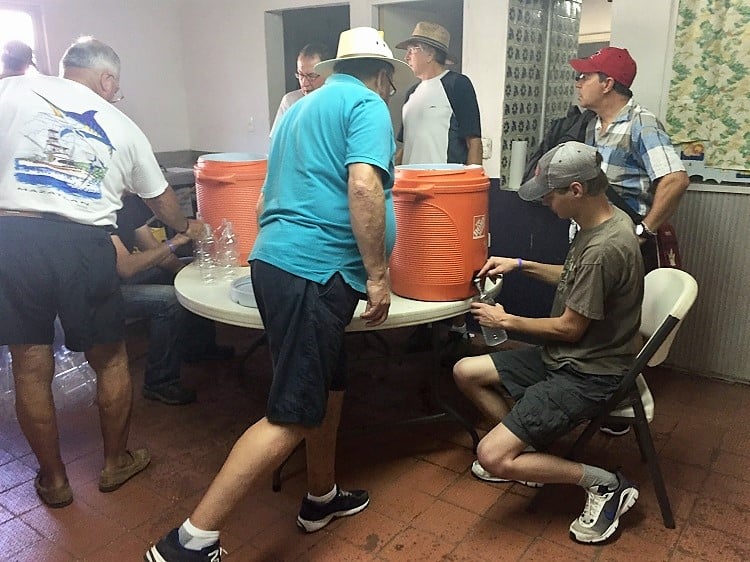
Once the goods were made and packed up, American retiree and La Vina member David Farcone gave an outline about what to expect on the trip away from the tourist area called the Golden Zone. He showed volunteers a short video about the trip. They want to prepare tourists and retirees for the kind of poverty you’ll see on the excursion.
Their story
I’ve seen a lot of poverty on our travels over the years – including on backpacking vacations to Central America before retirement, and of course to the places we’ve been since we’ve started early retirement budget travel. But this was a first: I’ve never seen people so desperate for a way to earn a living that they scavenge through a city dump and leave their kids back home all day with virtually no supervision.
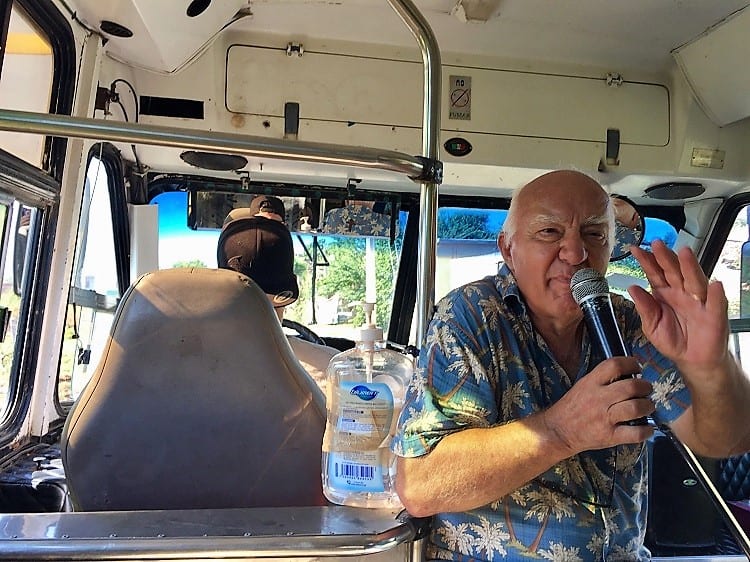
After the introductory video (which made me cry), we all loaded into bus and set out for the areas tourists never see. David continued to prepare us for what we would see, and how we should behave, on the bus ride.
“Don’t give them money — they will waste it on Coke and beer,” David said. “They don’t know how to handle money and they don’t know how to eat right. “They eat too much sugar and have diabetic problems. But give ’em smiles.” One reason people in poverty don’t eat right is because healthy foods are not easily accessible where they live, and they are too poor to afford cars to go get the food.
Handing out food and water is humbling
Our first stop was in one colonia, or neighborhood, where the church has a community center. We handed out sandwiches and water to children. The kids knew the bus was coming and a few were lined up as the bus parked, while others came running when they heard us coming.
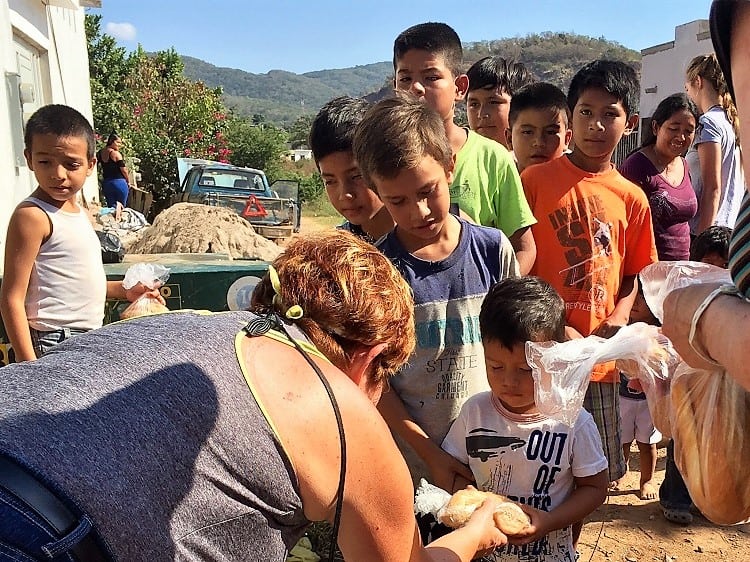
Young children are not allowed to scavenge at the city dump, and instead the kids stay behind at home along with a few women, while most of the moms and dads go to work in the trash piles.
Our next stop after that first colonia was the dump.
The dump
People work the dump as freelance recyclers. They collect certain plastics in large quantities they can sell for a few pesos. There is no official recycling program connected with city garbage collection, so this is a way for some people to make money.
There also are people who scavenge. These people look for other goods they might turn into money, such as broken items they may be able to fix and sell. However, not many things of value are thrown out in the trash in Mexico, and if something of value is thrown away, it’s likely picked up by someone on the street before the garbage collectors come. So the people who scavenge are really sorting through the bottom of the bottom.
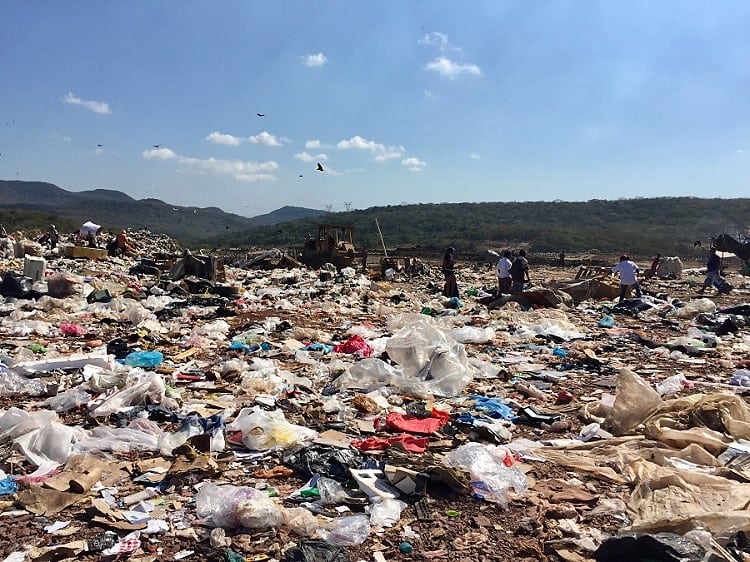
As soon as the city garbage trucks dump trash, people begin sorting. I could feel the ground shake whenever a truck or tractor moved anywhere within my line of sight. The smell was awful and vultures circled overhead.
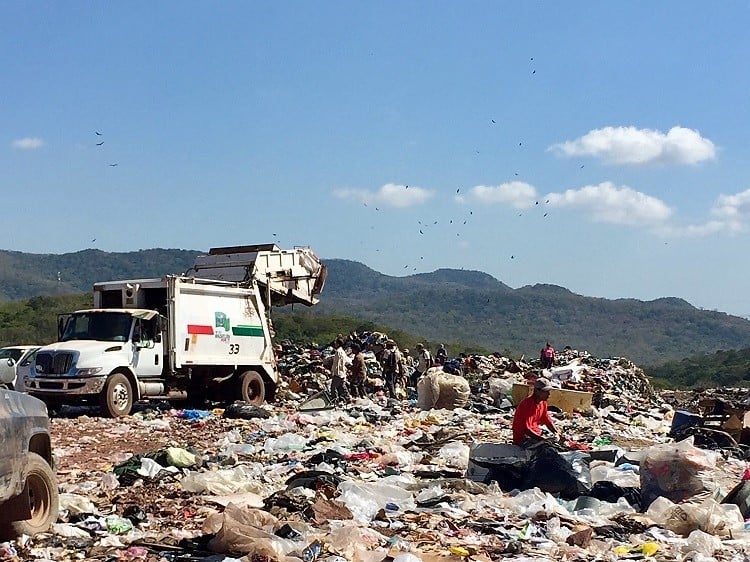
The men looked serious and somewhat gruff —– until I smiled at them. Then they would smile back and soften up.
I started small talk with one man who told me it was hard work every day in the sun, but he was grateful to have the chance to earn some money. He said he searched the trash every day and always hoped for the best – he would not give up. He was kind and seemed intelligent enough that he really shouldn’t be working in a dump. My conversation with him was limited, because my Spanish is limited. I wished him well. It was all I could do at that moment.
These people are not born into privilege like me, yet they shine and delight when someone like me takes a few minutes to share a few words and shake their hand.
Another man knew a few phrases in English and stopped to talk to us. He also wanted to pose for a picture, and gave me and Tedly the peace sign as he tried to duck from the sun.
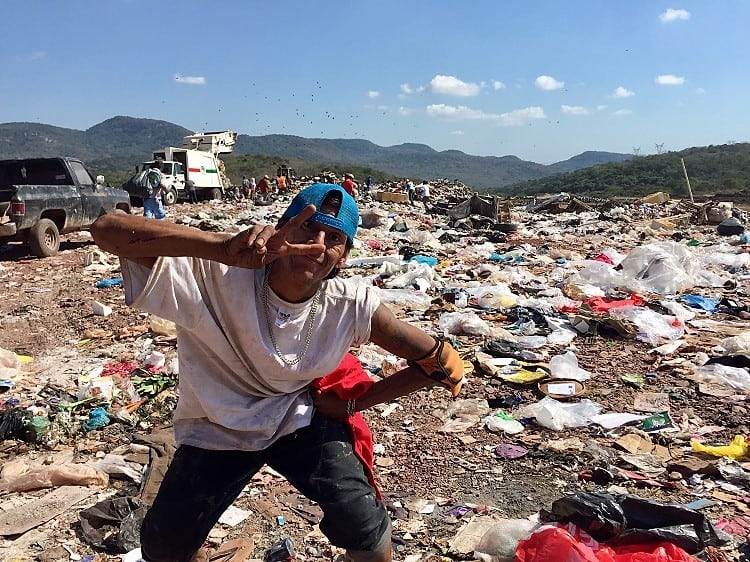
A few more stops
After the dump, we stopped at two more colonias. First we stopped at a neighborhood where almost all parents were gone from the area, because they were working at the dump. The kids have little, if any, supervision, and this is a problem. Many kids turn to drugs and alcohol. David said they also are exposed to a lot domestic violence. La Vina is trying to help change that.
“It’s not a nice place,” David said. “Kids act just like you’d expect kids to, who live in a situation like that.” For example, he said, they fight with rocks on each other to settle disagreements. By the time some kids are 12, they already are dealing drugs.
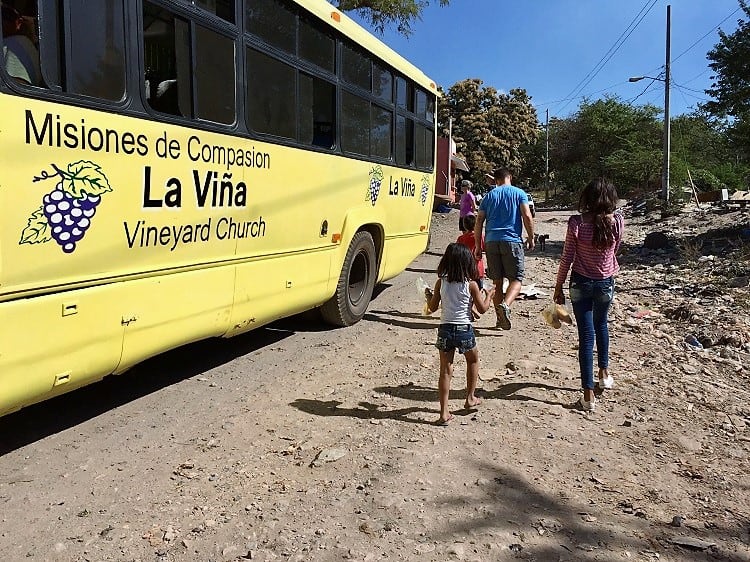
The last neighborhood had the most children. There was enough water for everyone (none of these areas had access to free, clean drinking water), but we ran out of sandwiches. This broke my heart. I wanted to feed these kids an amazing nutritious meal – not that white bread with processed ham and cheese with a dollop of mayo is nutritious.
Tedly pointed out these kids aren’t starving – they do eat – it’s just that they eat mostly junk. He was trying to make me feel better, of course, but it didn’t really work. One girl I saw was carrying a bag of M&Ms. Hardly a nutritious meal.
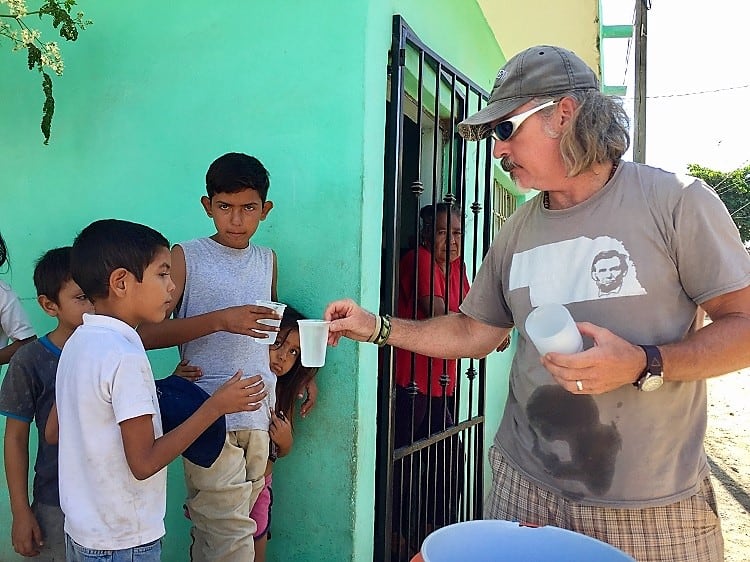
I had a granola bar and one hard-boiled egg in my day pack, so I chased down a group of six kids that had started to walk away from the bus and water line when we ran out of food. I gave my snack to the oldest boy in the group.
Lo siento, yo no tengo mas. I’m sorry, I don’t have more. The boy, maybe 11 or 12 years old, looked me in the eye, said in “thank you” in practiced English with a serious face, and then broke out into a big smile. I wish I could have given him (and his apparent younger siblings) more.
What does all this food cost?
David said it costs about $150 USD each time the church makes a run out to these areas with food and water. That includes the gas it takes to make the run. In the high season, roughly mid-November through April or May, the church goes about twice a week. In the low season, the church goes once a week – although some weeks in the hot, humid summer months, there are no volunteers on the tour and David goes it alone.
Had we known this, we would have gone each week since we’ve been here. That’s another reason I’m writing this post: if you are in Mazatlan during the low season, and want a way to help the locals, this is your chance.
Also, Vineyard Church is always accepting donations. La Vina also runs a number of other programs, including ways to sponsor a child, donations specifically to buy kids shoes, scholarships to help kids through school, and more – including day trips to the beach. Even though these kids of Mazatlan live near a gorgeous Pacific coastline – most never get the chance to go three miles from home to see the ocean. Three. Miles.
Wouldn’t helping one of these kids be better than another consumerism gift card this holiday season? Some families in Mazatlan don’t have enough money to buy their kids shoes.
Joy in selfless acts
The joy a person can get from selfless acts is easily seen in David. “I’ve never been so sure in my life that I’m doing what I’m supposed to be doing,” he said with closed eyes and a smile. He exudes love and serenity. He’s doing something – walking the walk, so to speak. A different life from his construction days in California, when he said he worked on multi-million dollar homes.
Even though I was saddened by some of what I saw on this trip, I also had a few moments of joy at doing something for someone else. And that’s what makes this trip so worth it.
For more information about the dump and colonia runs, or for La Vina’s other programs, visit the church’s website here.
This experience is one of many that I’ll take with me on my travels, as I change and grow and learn about what it’s like for the rest of the world outside the privileged confines of the United States of America.
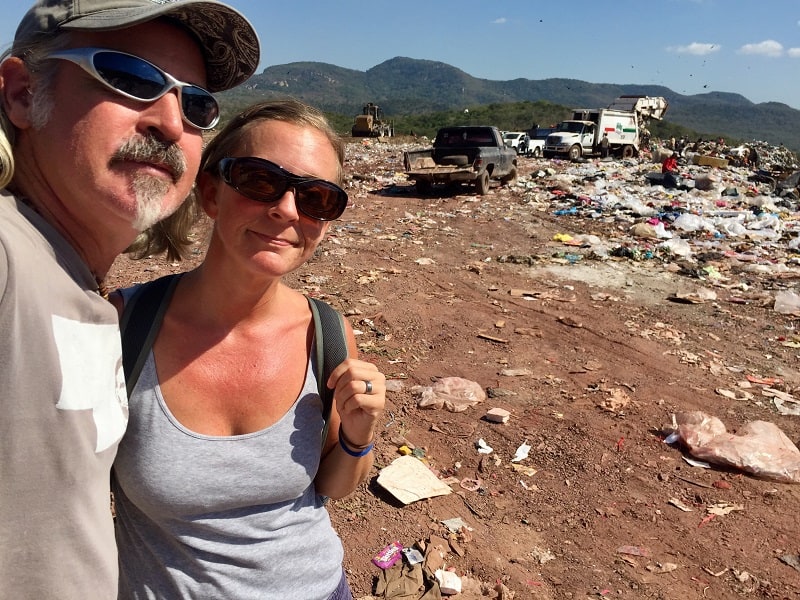
🙂

This brings tears to my eyes. I will make it a point to contact this organization next time I’m in Mazatlan! I don’t know how you don’t scoop up all those kids and take them home. Thanks for sharing and making me realize how privileged some of us are.
That’s awesome of you! If I encouraged just one person to visit the church and these areas, time spent on this blog entry was so worth it. Thank you Samantha!